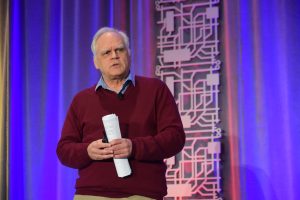Rerouting the Don River through brownfield lands that saw their first industrial use more than a century ago is among the hurdles facing Toronto in its quest to redevelop the Port Lands — an 800-hectare parcel of underused waterfront property just east of the city’s downtown.
The work, tabulated at $1.2 billion, includes environmental testing and soil remediation plus a new river channel and mouth at Lake Ontario to stop river flooding that has kept the land from developers’ hands for decades.
But getting to that stage won’t be easy. Aside from the funding challenges, a three-government agreement is required to move ahead on the project, the clean-up and a new river channel is a sizable endeavour.
"Creating a river through a brownfield site is a unique process," says Meggen Janes, senior project manager, CH2M, who gave a presentation at Brownfields: The Next Generation, a conference held in Toronto recently.
The Port Lands was created from fill in the 1890s to the early 1900s for industrial use, but that land today is contaminated by a range of chemical mixtures such as nonaqueous phase liquids, Janes told delegates at the seventh annual conference held by the Canadian Brownfields Network.
CH2M was retained as an environmental and earthworks consultant by Waterfront Toronto, which is overseeing the Port Lands redevelopment.
Janes says over one million cubic metres of soil will need to be excavated for the new river channel. The soil will be remediated and reused on the property. The cost of excavation and remediation is estimated at about $300 million.
Studies indicate that dewatering areas to complete the work are not feasible. Waterfront Toronto has recommended the new river channel be "excavated in the wet — almost like a dredging and dewatering operation," says Janes. "It’s huge. It is significant."
She said CH2M’s Community Based Risk Assessment (CBRA) used to assess the Port Lands site is similar to conventional risk assessment analysis but the CBRA is tailored to large areas and is "much more collaborative," as it includes decisions based on public consultation with agencies and advisory committees.
Janes says Waterfront Toronto will be running pilot tests this summer on about 10 technologies to cleanup or remediate some of the contaminants.
The goal — pending funding approval — is to complete design and remediation in 2019, with construction completion in 2023. By comparison, a brownfield strategy developed in the town of Mayerthorpe, Alta. is tiny but the municipality is among members with projects in the Federation of Canadian Municipalities’ (FCM) Green Municipal Fund’s Leadership in Brownfield Renewal program (LIBRE).
LIBRE is an information-sharing opportunity for members with brownfields across Canada.
With limited staff and resources, developing a brownfield redevelopment strategy in the rural community went to the hands of Karen St. Martin, the town’s chief administrative officer.
St. Martin told delegates at a seminar that there are about 600 acres of brownfield sites in Mayerthorpe, ranging from "mom and pop" gas stations, bulk fuel stations, fertilizer industries, welding shops and dry cleaners.
The town’s brownfield policy — gleaned from the City of Edmonton — provides up to $1,000 in municipal grant funds for land owners completing a phase one environmental assessment and up $5,000 for a more extensive phase two assessment.
"We’ve only had one landowner engage the town but for a community of our size I think that’s a win," says St. Martin, adding that the municipality will assist the owner with the environmental assessment process.
Research shows the site was a mechanics shop and fuelling station in 1961 but by 1978 it had become a used car dealership and is now a parking lot for a trail, she told delegates, adding the town will retain an environmental consultant to assist with the phase two evaluation of the site.
St. Martin said getting the municipal council on side to help fund the brownfields program was easy.
"They are forward-thinking. They are looking for a balanced approach to municipal sustainability and they recognize this is a key component," she says.
"Mayerthorpe is a shining example of a very small community of 1,400 people that took the initiative to join this program…to educate itself on what brownfield development means in their community," says Stephanie Bohdanow, a conference speaker and a knowledge services advisor at the FCM Green Municipal Fund.






Recent Comments
comments for this post are closed